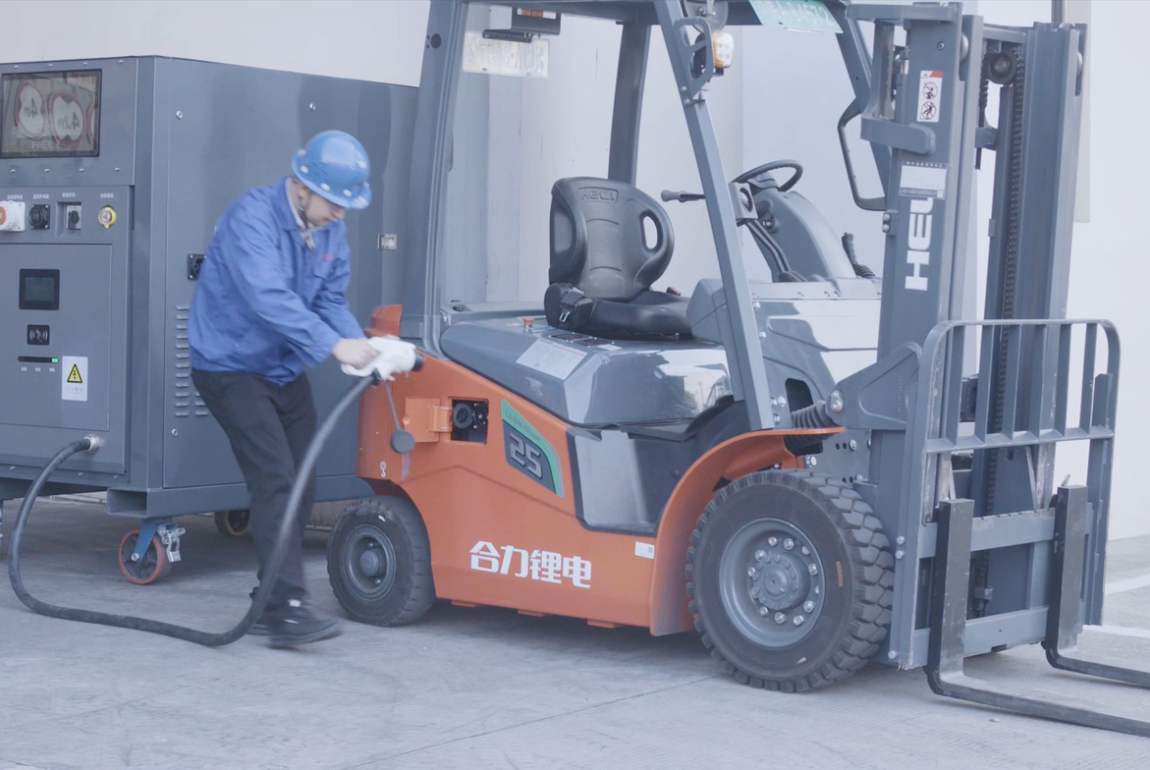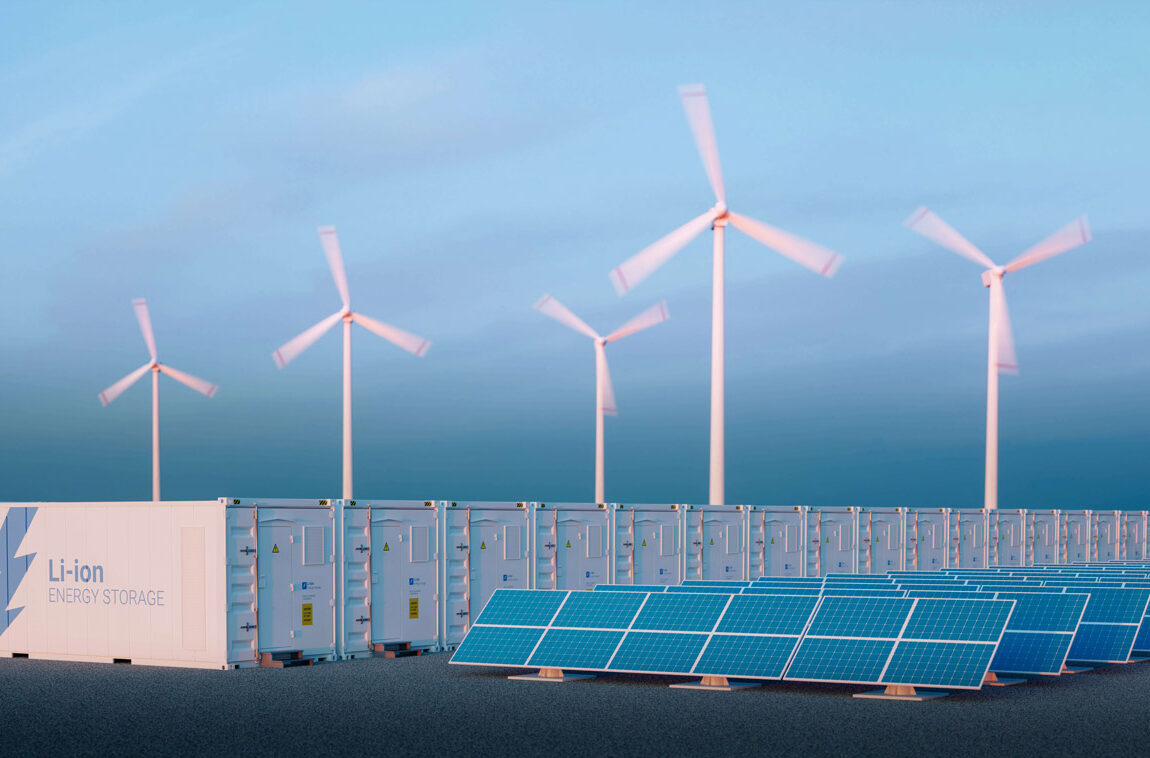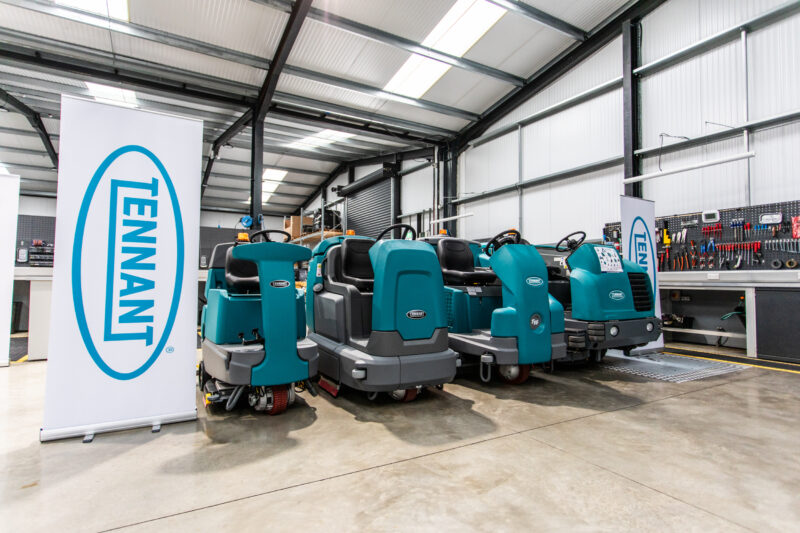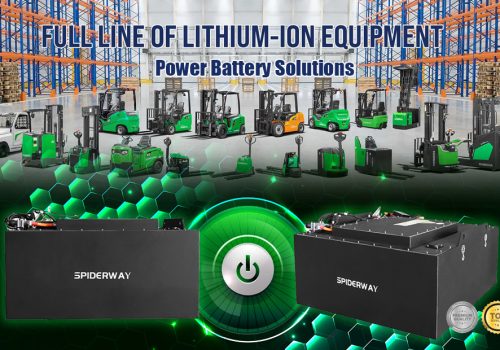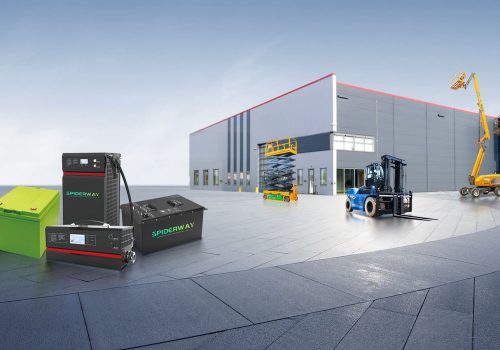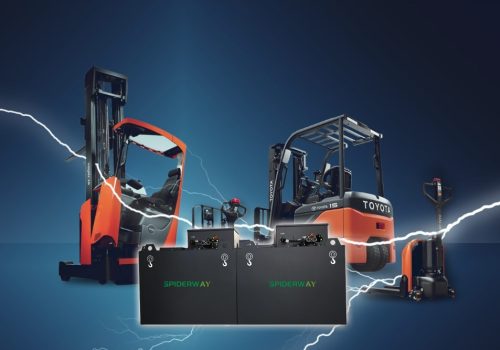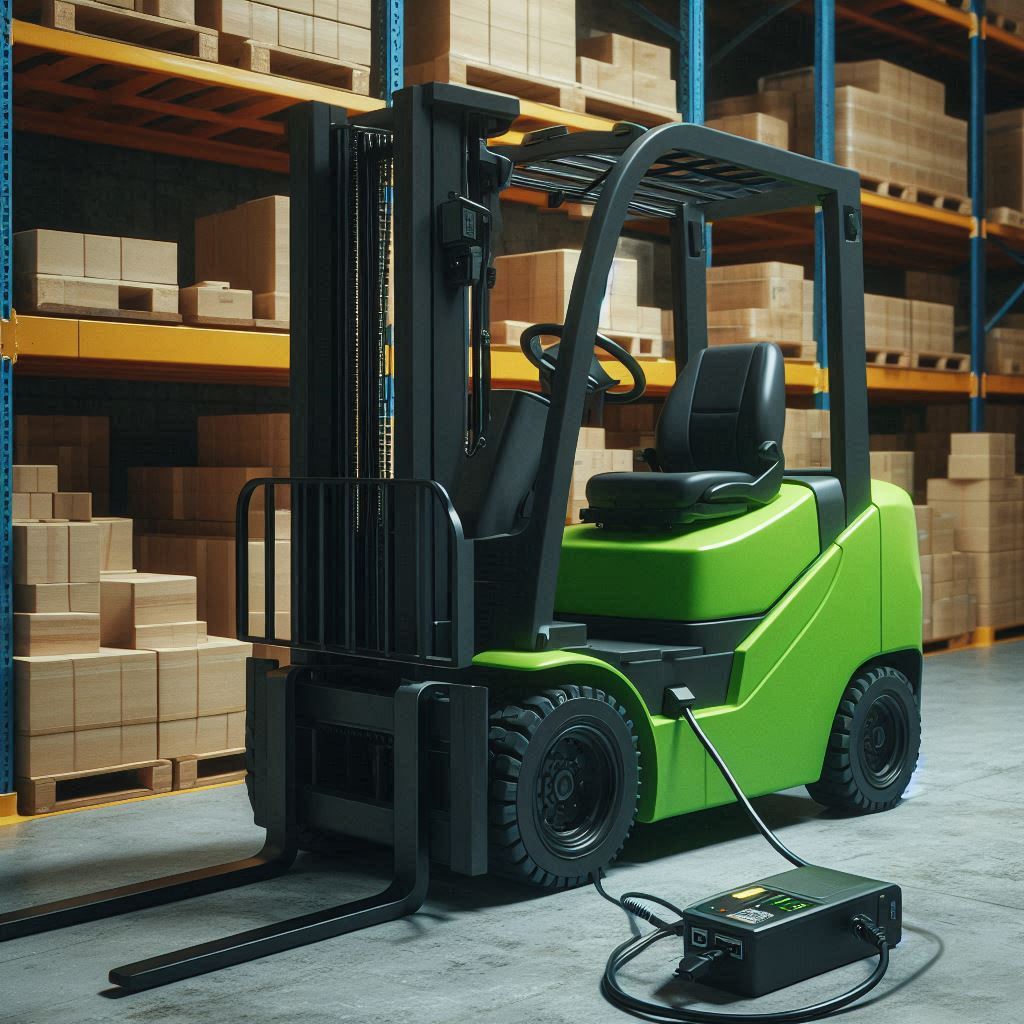
The transition to LFP (Lithium Iron Phosphate) batteries in forklift operations offers numerous benefits, including longer lifespans, rapid charging capabilities, and lower maintenance requirements. Choosing the right LFP forklift battery charger and understanding the charging process is crucial to maximizing the performance and longevity of these batteries.
Selecting an LFP Forklift Battery Charger
When selecting an LFP forklift battery charger, consider the following factors:
- Compatibility: Ensure the charger is compatible with the LFP battery’s voltage and capacity. Different forklift models have different battery specifications, such as 24V, 36V, 48V, 72V, and 80V .
- Charging Speed: Look for a charger that supports opportunity charging, allowing the battery to be charged quickly during short breaks, which is a significant advantage of LFP batteries .
- Safety Features: Choose a charger with built-in safety features such as overload, over-voltage, over-heating, short circuit, and reverse polarity protection .
- Efficiency: Opt for a charger with high power efficiency to minimize energy waste and reduce operating costs.
- Size and Portability: Consider the physical size and weight of the charger, especially if it needs to be moved frequently or placed in tight spaces.
- Manufacturer Reputation: Select a charger from a reputable manufacturer with a proven track record in producing reliable and efficient LFP battery chargers.
Charging LFP Forklift Batteries
To properly charge LFP forklift batteries, follow these steps:
- Pre-Charge Inspection: Before charging, inspect the battery and charger for any visible damage or debris that might affect the charging process.
- Correct Connection: Ensure the charger is correctly connected to the battery and that the power source is within the input voltage range of the charger .
- Charging Process: Initiate the charging process using a charger that offers multiple charging stages, typically including constant current (CC), constant voltage (CV), and float charging or trickle charging .
- Monitoring: Monitor the charging process to ensure it proceeds without issues. Most chargers will have indicators to show the charging status.
- Post-Charge: After charging, ensure the battery is cool to the touch and that all connections are secure before reattaching the battery to the forklift.
- Maintenance: Although LFP batteries require minimal maintenance, periodic checks of the battery and charger condition are advisable to ensure longevity and safety.
Spiderway LFP Forklift Battery Chargers
Spiderway Technology, a leading manufacturer in the LFP battery industry, offers a range of LFP forklift battery chargers designed for efficiency and reliability. Their chargers feature advanced high-frequency switching mode power supply technology, providing a compact, lightweight, and portable solution for various industrial applications . With a focus on safety and performance, Spiderway chargers come equipped with multiple protections such as short circuit, over-voltage, and over-temperature, ensuring a safe and efficient charging experience .
- Product on sale
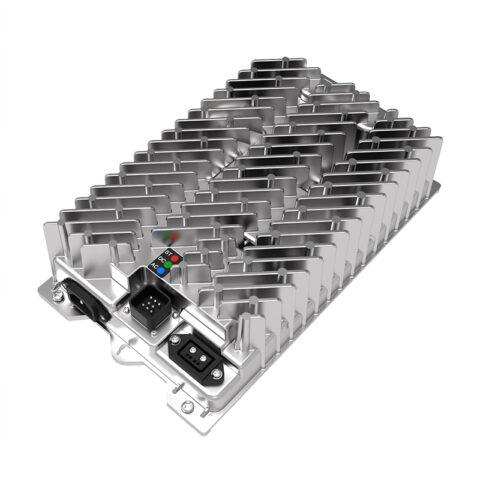 FlexChar 36V 25A 900W Industrial Battery Charger For Golf Cart/Electric Forklift/Electric VehicleOriginal price was: $350.00.$339.00Current price is: $339.00.
FlexChar 36V 25A 900W Industrial Battery Charger For Golf Cart/Electric Forklift/Electric VehicleOriginal price was: $350.00.$339.00Current price is: $339.00. - Product on sale
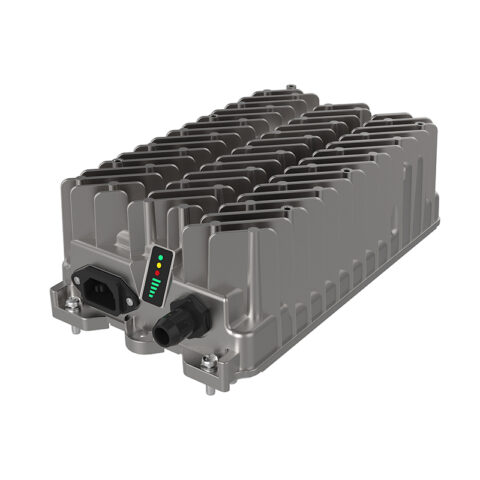 FlexChar 24V 18A 420W Industrial Battery Charger For Golf Cart/Electric Forklift/Electric VehicleOriginal price was: $300.00.$289.00Current price is: $289.00.
FlexChar 24V 18A 420W Industrial Battery Charger For Golf Cart/Electric Forklift/Electric VehicleOriginal price was: $300.00.$289.00Current price is: $289.00. - Product on sale
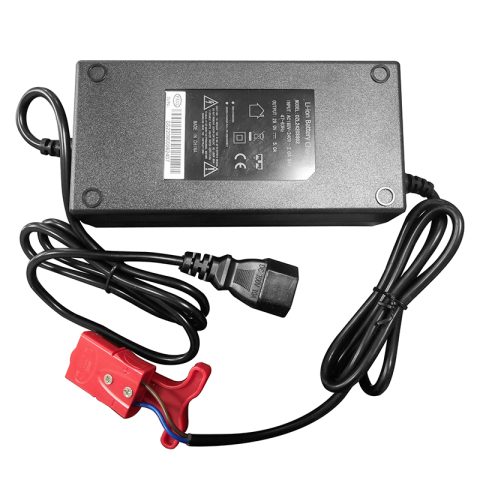 29.4V 6A XilLin Electric Pallet Truck Lithium battery ChargerOriginal price was: $199.00.$100.00Current price is: $100.00.
29.4V 6A XilLin Electric Pallet Truck Lithium battery ChargerOriginal price was: $199.00.$100.00Current price is: $100.00. - Product on sale
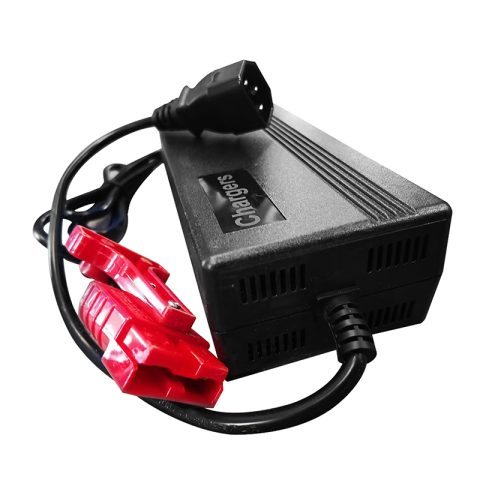 48V 6A XilLin Electric Pallet Truck Lithium battery ChargerOriginal price was: $199.00.$100.00Current price is: $100.00.
48V 6A XilLin Electric Pallet Truck Lithium battery ChargerOriginal price was: $199.00.$100.00Current price is: $100.00. - Product on sale
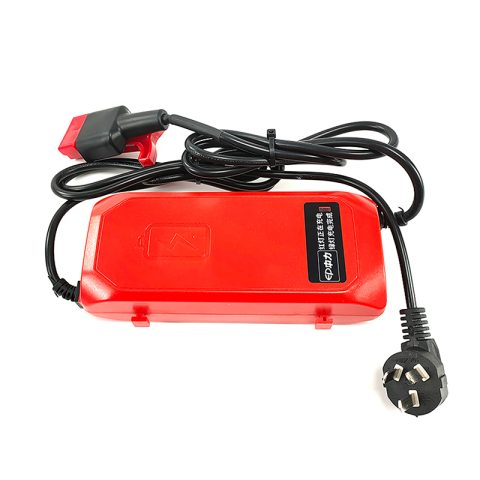 24V 5A EP Electric Pallet Truck Lithium Battery ChargerOriginal price was: $120.00.$100.00Current price is: $100.00.
24V 5A EP Electric Pallet Truck Lithium Battery ChargerOriginal price was: $120.00.$100.00Current price is: $100.00. - Product on sale
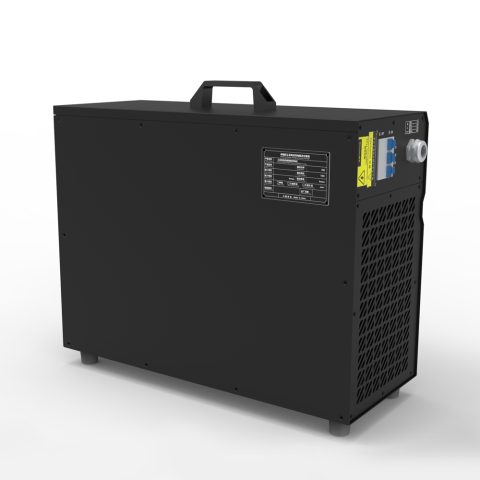 80V 200A Three Phase Lithium Battery Charger For ForkliftOriginal price was: $1,850.00.$1,710.00Current price is: $1,710.00.
80V 200A Three Phase Lithium Battery Charger For ForkliftOriginal price was: $1,850.00.$1,710.00Current price is: $1,710.00. - Product on sale
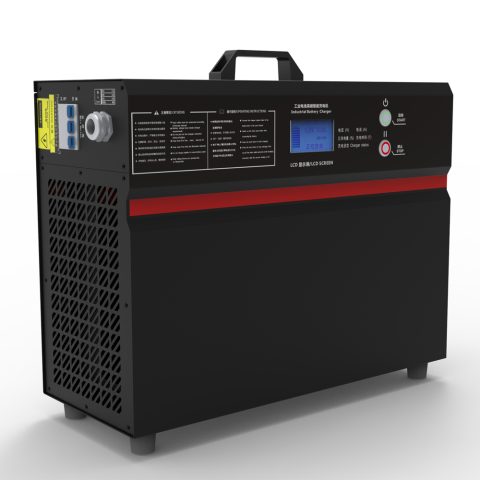 80V 100A LiFePO4 Forklift Battery Charger Set for ToyotaOriginal price was: $1,160.00.$1,040.00Current price is: $1,040.00.
80V 100A LiFePO4 Forklift Battery Charger Set for ToyotaOriginal price was: $1,160.00.$1,040.00Current price is: $1,040.00. - Product on sale
 480V (320-530V) LiFePO4 Battery Charger Set for ForkliftOriginal price was: $1,845.00.$1,750.00Current price is: $1,750.00.
480V (320-530V) LiFePO4 Battery Charger Set for ForkliftOriginal price was: $1,845.00.$1,750.00Current price is: $1,750.00. - Product on sale
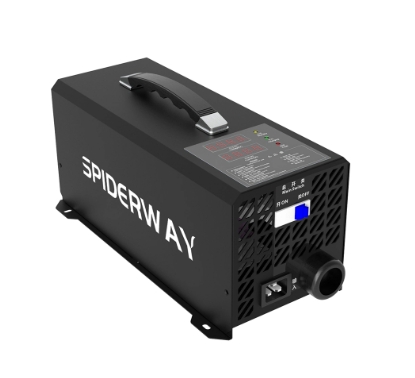 48V 100A-220V Forklift Batteries Chargers For Hyundai 15BROriginal price was: $1,250.00.$1,160.00Current price is: $1,160.00.
48V 100A-220V Forklift Batteries Chargers For Hyundai 15BROriginal price was: $1,250.00.$1,160.00Current price is: $1,160.00.
In conclusion, choosing the right LFP forklift battery charger and following the correct charging procedures are essential for the optimal performance and service life of LFP batteries. Spiderway’s chargers stand out for their quality and safety features, making them a preferred choice for many forklift operators worldwide.
Author Profile

- https://tawk.to/chat/6228c78d1ffac05b1d7dc569/1ftnkn0nk
- SpiderWay LiFePO4 battery sales engineer with ten years of experience in industrial vehicle batteries, ready to answer any questions you may have about industrial LiFePO4 battery products.
Latest entries
Battery Charger KnowledgeNovember 15, 2024LFP (LiFePO4) Battery Charger Supplier from China: The Ultimate Solution for EV and Renewable Energy Applications
Industry NewsNovember 15, 2024China ESS Energy Storage Battery Manufacturers: Industry Development Data and Future Market Trends
Cleaning MachinesNovember 15, 2024Global Leading Cleaning Machines Brands & LFP Lithium Battery Solutions: Powering the Future of Cleaning Technology
Industry NewsNovember 15, 2024Embracing the Energy Transition for a Sustainable Future

